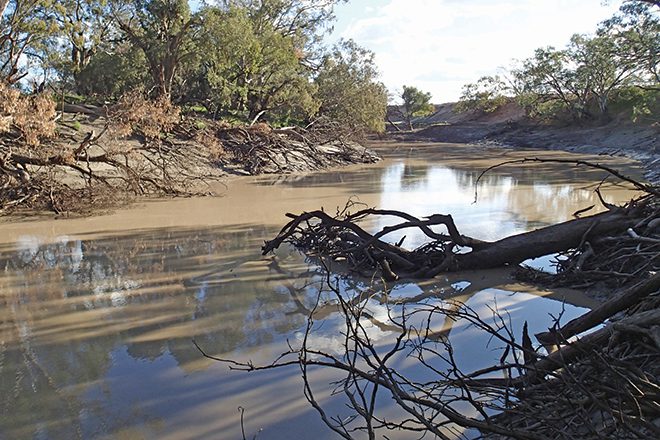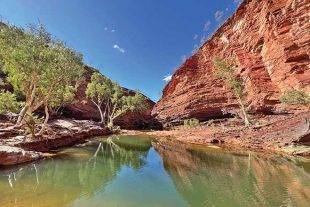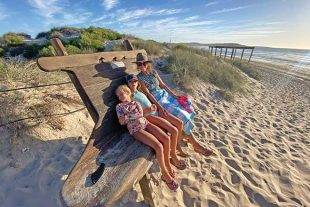If we truly want to save native fish from extinction, the first step in the process is making sure all the rivers in Australia run. Highly respected river ecologist Dr Martin Mallen-Cooper has warned that we are at a crucial juncture when it comes to protecting our native fish populations from further losses and in some cases extinction.
“We are absolutely at a very low point of native fish,” Dr Mallen-Cooper said.
“I think we’re close to losing quite common species… we’re at a pivotal time.
“The first step is we’ve got to guarantee some minimum flows in these rivers.”
Dr Mallen-Cooper has spent decades in aquatic sciences, with a passion for freshwater ecosystems.
He has done extensive research on the design of fishways – structures to get migratory fish past dams and weirs – as well as freshwater fish migration in the Murray-Darling Basin. Challenging accepted thinking has been a hallmark of his career.
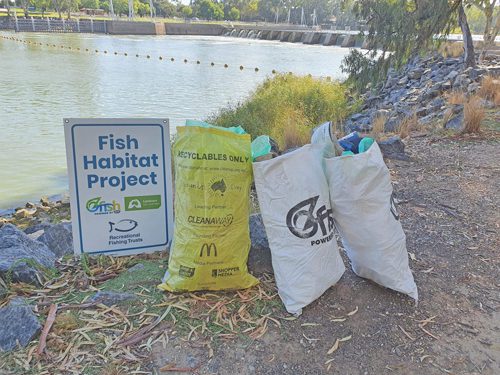
There had been an accepted view that historically the Murray River naturally dried to a series of pools in droughts.
However, using archival data and research in old library files and books, Dr Mallen-Cooper and colleagues found that it was an exaggerated myth.
Significantly, this meant a flowing river is the norm and that the fish are actually adapted to these conditions – this has since become a major theme, ecohydraulics, in environmental flow management.
“We can’t let what happened in the Darling last time, with these huge periods of zero flow and hot weather, which is predicted to get even hotter,” he said.
“We cannot let that happen again, otherwise the Darling is going to die, and that’s not an exaggeration – fish will die, mussels will die, the ecosystem will die.
“This is not a scientist exaggerating.”
In the Murray-Darling Basin in particular, he believes the five main issues that have incrementally killed aquatic life over the past century are cold water pollution, fish barriers, weir pools, de-snagging and the introduction of carp.

But there are solutions, and he is optimistic about the future.
On a recent episode of the Ozcast podcast for OzFish Unlimited, Australia’s fishing conservation charity, Dr Mallen-Cooper said, “This is not a hard thing.”
“Add flow and add habitat – that’s snags, that’s rocks – and then we start to get benefits back.
“You start to get a flowing river, this complexity of hydraulics.
“Native fish love it.
“There is a vision where you have agriculture, you have town water supplies.
“There is a vision here for massively improving native fish.
“It is not going to get back to what it was, but it will be such a massive improvement on what it is now.
“We as a community need to say we want to do this.
“We want buy-in.
“There’s actually a lot of good politicians who are keen on that sort of vision and so we need to keep influencing them,” he said.
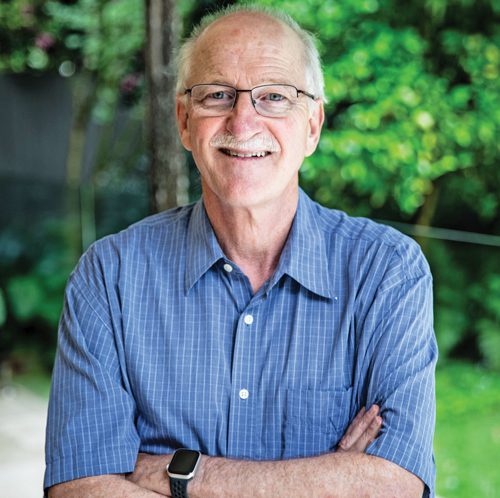
The proliferation of weir pools in Australia’s irrigation systems is a particular bugbear for Dr Mallen-Cooper, as they make up 40 percent of the Darling River.
“Weirs create a series of pools, so your flowing river becomes a series of pools,” he said.
“They are not a storage of water – they’re just sitting there as a pool.
“They create a still-water habitat.
“That’s a huge impact.
“They’re actually really impactful to fish populations.”
He added that there wasn’t an anti-irrigation or anti-dam theme, there was simply a smarter way of managing the rivers.
“The science around this is done and dusted,” he said.
“We know that if you fix that, you will get better outcomes for native fish.
“And we know if you have a flowing river and not a series of weir pools, it’s better for native fish.
“We need the community to understand that we have the tools to do it and they need to make the choice.
“Some of those weirs can be taken out, some are used to divert agriculture water, large amounts in big diversion weirs – we’d love to keep some of those, but we need to stand back and have a vision of what we want for fish and healthy rivers.
“And it’s not blue-green algae, it’s not fish kills, it’s not full of carp and we’re smart enough to do it.
Dr Mallen-Cooper also pointed out that we’re basically running on a 1960s water management paradigm and that it would take a commitment.
“We can do this better,” he said.
“I’m incredibly optimistic about the future because I see a vibrant agriculture and vibrant rivers.
“We need to tell our politicians there are choices.”
Paul Suttor
OzFish Unlimited
 Bush 'n Beach Fishing Magazine Location reports & tips for fishing, boating, camping, kayaking, 4WDing in Queensland and Northern NSW
Bush 'n Beach Fishing Magazine Location reports & tips for fishing, boating, camping, kayaking, 4WDing in Queensland and Northern NSW
